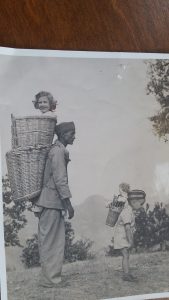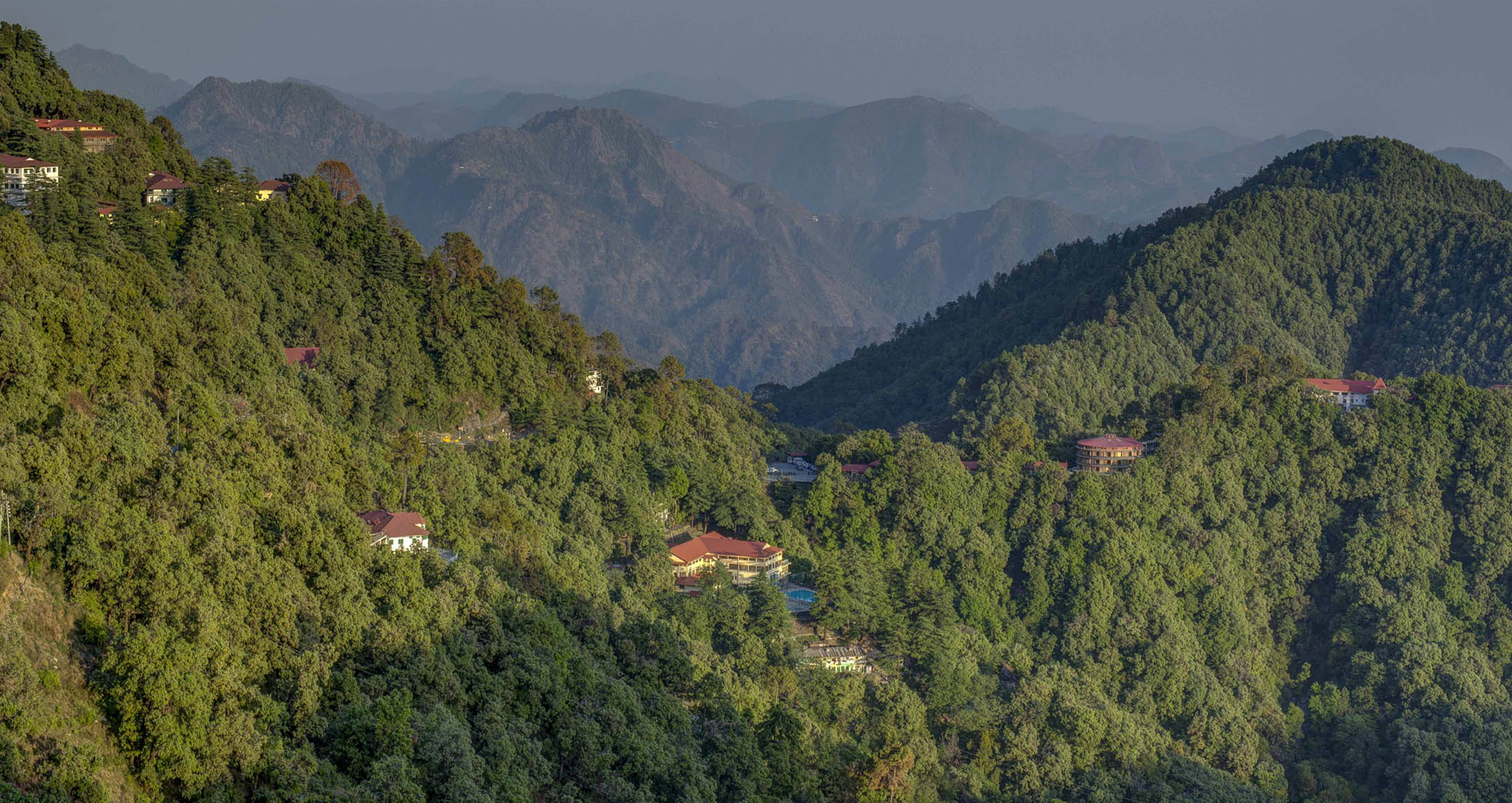
19 Feb WOODSTOCK SCHOOL AND THE YEAR 1947
 Unknown to them, 1947 was a pivotal year for two children coming to Woodstock School for the first time. Ashok Mayadas was enrolled in Standard One in March, and Judith Dillingham joined the Standard One class in April. Ashok came from Ferozepore, Punjab, and Judith came from Escalon, California. Their lives would join as classmates from Standard One until graduation in May of 1957. They would diverge for college and for many years thereafter. Ashok went to Colorado School of Mines and then Cornell University in New York State; Judith to San Jose State University in California. Their lives joined again when they were married in 2018 at St. Paul’s Episcopal Church in Walnut Creek, California. Also unknown to these two 7-year olds, was that 1947 would be a pivotal year for India, for the entire subcontinent, and for the world. They would become aware of the currents that were rapidly shaping events, with only a slight understanding of what was happening and why.
Unknown to them, 1947 was a pivotal year for two children coming to Woodstock School for the first time. Ashok Mayadas was enrolled in Standard One in March, and Judith Dillingham joined the Standard One class in April. Ashok came from Ferozepore, Punjab, and Judith came from Escalon, California. Their lives would join as classmates from Standard One until graduation in May of 1957. They would diverge for college and for many years thereafter. Ashok went to Colorado School of Mines and then Cornell University in New York State; Judith to San Jose State University in California. Their lives joined again when they were married in 2018 at St. Paul’s Episcopal Church in Walnut Creek, California. Also unknown to these two 7-year olds, was that 1947 would be a pivotal year for India, for the entire subcontinent, and for the world. They would become aware of the currents that were rapidly shaping events, with only a slight understanding of what was happening and why.
August 15, saw the Indian flag raised over the country, to the tune of a new national anthem. It saw the departure of the British Viceroy, the British military and related bureaucracies. The British population in India began migrating to their home country. Concurrently a new country, Pakistan came into being, accompanied with chaotic and a too-often violent mass movement of populations crossing the new borders. Lives were being lost, and families torn apart; history was being made.
Mussoorie was affected as well. Not as much as some other areas, but enough so that Ashok and Judy, and other Woodstock students as well, knew of turmoil and danger in the Mussoorie area. Although Judy started at Woodstock in 1947, she was a day student that year, living at the “top-of-hill” with her parents who were in Language School at Kellogg Church. She noticed that her father was getting up very early in August every morning, leaving her mother, her brother and herself to get up later and prepare for the day. What she didn’t know until years later was that her father was walking the two miles down to the Landour bazaar from the ‘top of the hill’ to get bread for breakfast. The staff at the boarding house where the Dillingham’s lived were Muslim and it wasn’t safe for one of them to get the bread. Ashok was delighted when the weather became very hot in the Punjab and his mother came to Landour in July, to take him and his brother David out of boarding. Living at a hillside home was much nicer than boarding. Life was good, but David and Ashok knew in an imprecise way that words like “looting” and “rioting” and “evacuation” were finding their way into many adult conversations.
Ashok sneaked into Landour bazaar one day after reports of “trouble”, and saw one of the stores where his mother had shopped, was totally stripped. The looters had left nothing behind – except for one bottle of lemon juice, which Ashok liberated! During this time the situation in Ferozepore was also becoming more difficult. The Mayadas’ properties bordered the Sutlej River which was the boundary in the Punjab between India and Pakistan. Major Mayadas was concerned that his wife and sons were in Mussoorie, so far from home and in a not easily reachable place. He contacted his wife and said he was coming up to Landour to take them down to the Plains. They were not going home, but to the home of an uncle and aunt in Phillaur, farther inland from the border. The Mayadas family left Mussoorie in September, well before the Woodstock school term was scheduled to end. At Kincraig, their bus for Dehradun was delayed by a bureaucrat who insisted the bus-driver’s papers were not in order, and he could not permit departure. Major Mayadas, who was armed, jumped out of the bus and roughly pushed the bureaucrat out of the way, and then ordered the driver to drive! In those days, these sorts of delays could mean serious trouble. Spring of 1948 saw some abatement but not an end in the unrest.
Woodstock opened for the new school year in March. Judy would have her first experience of boarding school. Her parents took her to Lucknow, the nearest big city to take the train to Dehra Dun. On the platform a pretty high school girl came up and introduced herself to Judy and her parents. Her name was ‘Mary’ and she was going to take care of Judy on the train. Judy kissed her parents good-by and Mary hoisted her up the stairs into the train. At the window, Judy waved to her parents until the train pulled out. She settled down for an exciting train trip to Dehra Dun, the bus ride to Kincraig, and the long walk into Woodstock. Judy didn’t know until many years later what Mary’s job that night really was. Railroad tracks were being blown up. There was a special engine going ahead of this train full of Woodstock-bound students and staff members, checking for track damage. Mary was responsible for Judy if the tracks in front of the train were destroyed.All this was just 1947 and ’48. The years would roll by, following a familiar pattern: arrival for the Woodstock part of the year starting in spring with its cool weather and beautiful hillside rhododendrons, summer with its monsoon, and fall with the Olympics, Diwali and appearance of the mysterious winter-line, then Going-Down Day. Finally it would be the home phase with winters and Christmas on the plains with parents and family.World events were a backdrop as these two progressed towards graduation: assassination of Mahatma Gandhi, start of the cold war, start and end of the Korean War, the transformation of India into a republic, the occupation of Tibet by China, the election of General Eisenhower as US President. And much more.
But when Ashok and Judy reminisce these days, the conversation often drifts right back to that pivotal year – 1947






Kaval Singh Gulhati
Posted at 17:24h, 20 FebruaryIs Ashok Mayadas son of Frank Mayadas – a dear ‘uncle’ who recommended to my parents that their daughter, an October ‘47 evacuee from convent school in Srinagar, Kashmir , join Woodstock School?
Bruce R Fiol
Posted at 22:01h, 20 FebruaryHow special to make contact with some very special friends of “my era”!! Seems like the Lord had something very special for Ashok and Judy. Thanks for sharing something of your personal story. And thank you, too, for sharing your insights of the major historical events which I also lived through.
Don Barr
Posted at 00:30h, 21 FebruaryThanks for sharing this story. My parents, Bill and Willie Barr, served in Ferozepore in the early 1950s and were good friends with the Mayadas family. Later on when Ashok was studying at Colorado School of Mines, he spent some summers living with us in Dayton, Ohio, while working a summer job with the Public Works department. While in Dayton, he met and eventually married my first cousin, Caroline Barr. She passed away after a long and rich life together with Ashok in New York where he worked for IBM. It was a delight to hear of his marriage to Judy. Our prayers are with them in this new adventure together.
Arun Bhagwat
Posted at 20:28h, 25 SeptemberHello……Very interesting to. hear about Ashok and Judy……I attended Woodstock boarding school for one year in 1947…..I was 8 years old. and came from Poona near Bombay. Do you know of other students attending that year? One of them I remember was Stig Gustaffson. A couple of teachers names I recall-Mr Biswas…and Ms Chitamber. Much later I came to the States for graduate engineering studies and then joined IBM. Lived and worked for a number of years in Europe, …and also Westchester, New York. My wife is from Hamburg, Germany. I retired as IBM director a few years ago…and we are now living in Sarasota, West Florida and am busy playing music.
Although it was a short stay, I have wonderful memories of Woodstock.
My music website is http://www.arunsmusic.com Would like to hear back if possible by email…Thanks